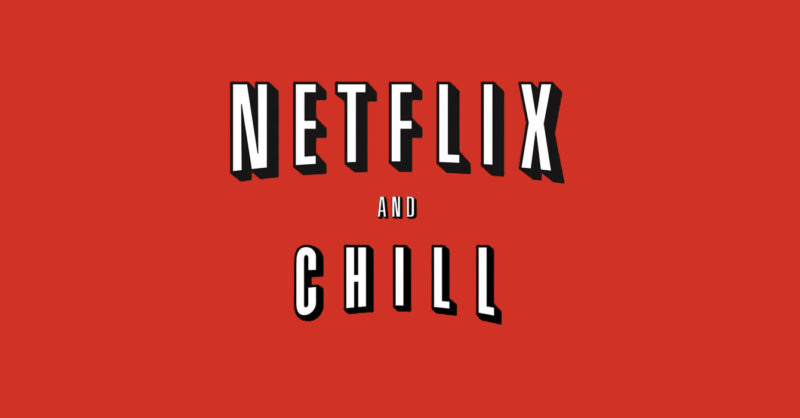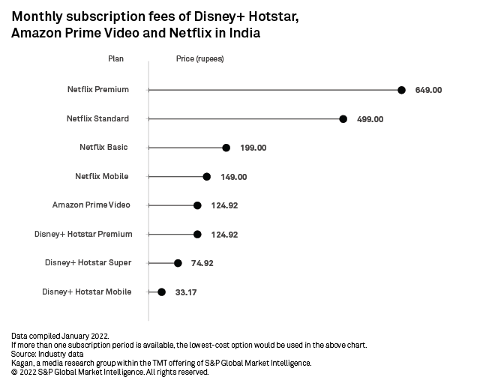
Netflix is struggling to win subscribers in India.
Industry estimates put its subscriber base between 4.3mn and 4.5mn (compared to its rivals Disney+Hotstar ~36mn and Amazon Prime ~17mn). Clearly, the 6+ years Netflix has spent in India has not led to commensurate growth. Co-CEO Reed Hastings, in the latest quarterly earnings call, said that it was “frustrating,” that they haven’t been “successful in India.”
A lot of theories have been put forward to explain Netflix’s struggle – high pricing, a flawed distribution strategy, and niche content strategy, to name a few.
And yet, by one measure, Netflix is sitting pretty. It has the highest ARPU in the Indian OTT streaming category according to industry estimates. This allows Netflix, even with a low subscriber base, to make substantial annual revenue.
So why is Reed Hastings ‘frustrated’?
Because Netflix wants to grow its subscriber base in India, and that has eluded them so far.
What could be the reason why this is happening? And why is the way forward for Netflix in India not very clear?
The answer lies in Cappuccino.
Before we start brewing the answer, let us look at some of the major reasons why Netflix is struggling to grow its subscriber base in India.
Pricing – If you must ask the price, you can’t afford it
Netflix has the highest subscription fee amongst its competitors. Ever since launching, Netflix insisted on sticking to its high subscription fee, even in the face of competitors who were much cheaper.
Until Netflix caved in quite recently, under pressure to increase penetration. In December 2021, Netflix slashed its rates across the board (nearly 25%) and introduced a single screen (mobile or tablet) entry pack costing Rs. 149/month.
And yet, Netflix offerings are amongst the costliest of OTT options in India.
This point was driven home by Amazon Prime, which increased its prices across the board by 40-50% on the EXACT same day Netflix announced its price slash, and still ended up cheaper than comparable Netflix price plans.

All this is even before we consider India’s other unique price threat to Netflix. Cable TV. Indian cable TV prices are amongst the lowest globally, averaging about $3. This is a threat to all the OTT players, but affects Netflix especially because their prices are so high to begin with.
Next comes YouTube, with its freemium model, which makes a massive amount of free content available across multiple screens.
Content – Focused on India, but perhaps not Bharat
Over the last 6 years, Netflix has followed a mostly premium content strategy in India.
It has produced a number of India originals, but almost all of them have been targeted towards a Metro Tier 1 audience. For instance, of the 97 original pieces of Indian content Netflix has made till date, less than 10 are in regional languages other than Hindi. On the other hand, Amazon Prime has a healthy mix of Hindi and regional language content. And Disney+Hotstar has all the regional content from Star TV network.
Almost all of the major content successes for Netflix seem to be driven by Tier 1 audiences with global tastes. Netflix India VP of content, Monika Shergill, admitted as much in Nov 2021, when she pointed to a nearly 400% uptick in viewing of Korean content, a massive take up of Spanish programming, and a 250% increase in international nonfiction and unscripted content viewing, in recent times, on Netflix India.
Meanwhile, with the breakdown of language barriers facilitated by subtitling and dubbing, Indian regional language content is gaining more and more popularity in India. The recent successes of movies like Baahubali and Pushpa are great examples of this. No national OTT player can afford to ignore regional language content and programming if they want to survive in the long run.
Services – Come for the goodies, stay for the video
Both of Netflix’s major rivals – Amazon Prime and Disney+Hotstar, have a major advantage over Netflix – diversification.
What both Disney+Hotstar and Amazon Prime are trying to solve for, besides penetration, is repertoire behaviour. Content consumption (whether video, news, information, or music) is an inherently repertoire behaviour, with consumers conditioned to turn to multiple sources to satisfy their needs. This naturally increases the threat of churn. So these two major platforms are trying in their own way to increase the “time spent on platform”, by ensuring that customers do not have many reasons to leave the platform.
Disney+Hotstar has live streaming of sports, including IPL and EPL, news, and wholesome family entertainment from the Disney library in the form of cartoons and animated movies. Coming from the stable of Star network, it also has a huge selection of channels catering to the diverse viewing demands of Indians. This provides a great entry point for new consumers who come from entrenched cable TV viewing behaviour. This helped Hotstar to not only attract entirely new customers, but also upgrade existing cable TV viewers. From saas-bahu serials to Succession, from sports to soap operas, Disney+Hotstar offers a wide buffet of content choices.
Amazon Prime, on the other hand, has an entire adjacent e-commerce play with next day shipping and better discounts. Discounted content consumption and e-commerce feed each other, helping Amazon create a “walled garden” designed to keep consumers within the Amazon ecosystem.
On the other hand, Netflix has none of this.
Yes, this means that all of Netflix’s consumers are there to watch Netflix content. And with the world class UI/UX and global content Netflix provides, this works well for the current audience. But this focus also reduces the number of levers Netflix has to drive penetration and solve for repertoire behaviour, thus increasing Netflix’s struggle to grow its consumer base.
There is also an added danger. Premium global services like Apple TV can potentially fragment this consumer base further, thus weakening Netflix’s hold.
Distribution – Have data, will stream
Netflix launched in India in September 2016. The same month, another revolution launched in India, which was soon to have a major impact on the future of all Indian OTT players. Reliance launched Jio, forever democratising data in India and laying a bridge for all content and media companies to reach millions of Indian consumers who so far had been digitally starved.
Other OTT channels, especially Amazon Prime and Disney+Hotstar, quickly realised that this was an amazing way to drive adoption, especially amongst Tier2/3 cities, and moved fast to offer bundling services with telecom operators. Telco subscribers got OTT subscriptions for free, thereby greatly increasing the distribution of these OTT players.
However, Netflix remained strangely serene during all this frenzy, not bothering to bundle up with any Telco. This impacted Netflix’s ability to reach the next 100mn customers, especially during the early years when Amazon Prime and Disney+Hotstar consolidated their position.
Recently Netflix seems to have woken up, offering bundling services with Vi and Jio post-paid plans, but it may be a case of too little, too late.
Netflix – Cappuccino over Chai
Now it’s finally time to explain what we meant when we said the answer lies in Cappuccino.
With its high pricing and premium content strategy, Netflix has always targeted the Cappuccino Crowd, those who demand differentiation and convenience and are willing to pay a premium for it. These are the digital native consumers who are comfortable buying everything they need online and relish in ‘discovering’ new D2C brands. They don’t see convenience premium as a necessary evil, they see it as a price of admission to their lifestyle.
Across the world, Netflix has excelled at building relationships with these customers. These are the same customers that made ‘Netflix and chill’ a catchphrase. In India, Netflix has their finger on the pulse of this crowd, and its communications and content strategy is clearly targeted towards them.
The Cappuccino Crowd is aspirational, has stronger global tastes and higher standards of evaluation than any other segment, and is willing to pay a premium price to acquire what they want. This is what drove the uptick in global content viewing on Netflix platform.
What does all this mean?
This means that Netflix has not failed in ‘cracking’ the Indian market. It just has cracked a smaller base of consumers. And it has managed to do that beautifully well.
It has decoded what makes the Cappuccino crowd tick, and has become adept at serving them. In the process, for a very long (and perhaps, very crucial) time, they ignored the next 100mn customers in India. What we may arguably call the Chai crowd of India.
And therein lies the story of Netflix’s high ARPU, low subscriber conundrum.
Ok, but then why is the way forward for Netflix not very clear?
Because…
Netflix can’t just chill
On almost every major penetration lever (pricing, content, and distribution), Netflix is currently lagging behind its competition. Granted, it has started to make some progress on all of these. Netflix slashed prices, started investing more in original regional cinemas and dubbed content, introduced games as a means to improve engagement and time spent on platform, and partnered up with Telcos.
However, Netflix may need to answer a more fundamental strategic question for itself first.
What does it want from India?
Should it focus on keeping and growing its current subscriber base and optimizing revenue from them? Or should it try to expand its penetration (at the cost of lower ARPU) in the quest for higher subscription growth?
These questions are not easy to answer. Netflix also needs to realise that global brand building playbooks rarely apply in India and they will need to craft one specifically for India.
Netflix needs to decide whether it wants to drink Cappuccino or Chai. Or both. These are not easy decisions to make.
We would love to know what you think Netflix should do. Let us know your thoughts at freeflowing@winnerbrands.in.
